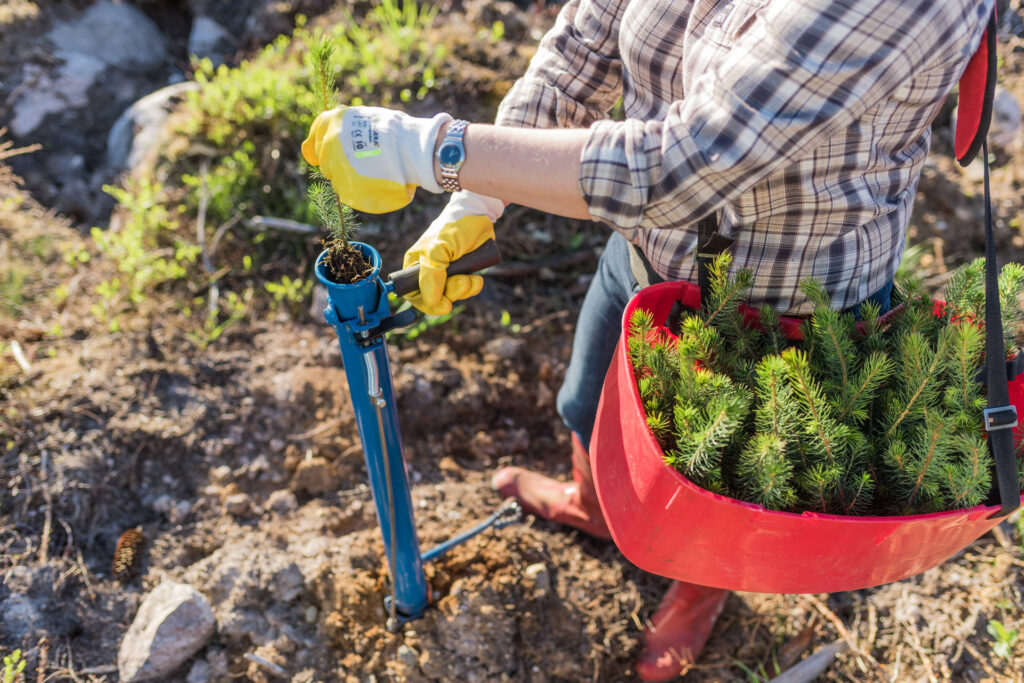Globally, tropical forests equal to the size of Switzerland were destroyed due to rampant deforestation in 2022. This is the equivalent of 11 football pitches of forest every minute, with Brazil leading the destruction. The EU even had to step in with import bans for goods that are linked to deforestation. An example of positive development is however Indonesia, where a reforestation comeback is underway, thanks to government and corporate action. This is where reforestation comes into play.
Deforestation and reforestation are both buzzwords of today for a good reason, but what do they mean? As to the well-being of our planet, including its lungs, one is part of the problem and the other part of the solution.
Deforestation – what, where, and why on Earth?
National Geographic refers to deforestation as an intentional clearing of forest land. For thousands of years, forests have been cut down to make space for manufacturing, agriculture and urbanisation. Forests can also suffer if more wood is harvested than planted. Today, deforestation happens mostly in tropical rainforest areas. It is literally a burning problem, especially in Africa and South America. Around the world, some 420 million hectares of forest were lost due to deforestation between 1990 and 2020. That is comparable to the size of the EU. Most of us find the current climate and biodiversity-threatening impacts of deforestation scary – as one should. But there are also a lot of misunderstandings out there about the subject.
On a global scale, about 80% of deforestation is due to expanding the needs of agriculture. However, for some reason, the forest industry often gets the blame as the “no.1 exploiter”. But hold on a minute, a manufacturing industry destroying its own resources? It actually does not make any sense if you stop and think about it. Reforestation, on the other hand, does.
Responsible forest use does not cause climate change – but mitigates it
There is a genuine need to increase knowledge about responsible forest management. When conducted correctly, forest management helps us preserve our planet’s viability for future generations.
Growing trees absorb more CO2 than mature ones, so how we manage to secure the healthy growth of forests is essential. If, after regeneration felling, each felled tree is always replaced with three to four new seedlings, it ensures the growth of new trees on the harvested plot.
Some countries have a long history of responsible forestry. For example, in Finland, there has been forest legislation in place already since 1886, and in Sweden, valuable forests are protected by The Forestry Act, stating that forests are to be managed in a way that provides a valuable yield but also preserves biodiversity.
Today, responsible forest industry operators make sure the origin of wood is fully traceable to sustainably managed forests. In addition, their operations are certified by globally acknowledged forest management systems, i.e. PEFC and FSC® (Our licence codes are PEFC/02-31-92 and FSC-C001580). Certifications help in enhancing the sustainability performance of forestry to meet the ever-tightening requirements. It has also been shown that certification leads to systemised improvements in biodiversity, like increasing the number of decaying wood and retention trees. These improvements, in turn, benefit various species that dwell in forests.

What exactly is responsible forest use?
The Food and Agriculture Organization of the UN lists three forest pathways for achieving green recovery and tackling planetary crises such as climate change. First, deforestation is to be put to a halt, and forests are to be maintained. Secondly, degraded lands should be restored and agroforestry expanded. Third, forests are to be maintained sustainably, and green value chains are to be built. The EU defines sustainable forest management as the stewardship and use of forest lands in a way and at a rate that, among others, maintains their productivity, biodiversity, and regeneration capacity.
Multinational consumer goods companies that package a lot play a central role when it comes to sustainability and green value chains. Corporations like Unilever have already paved the way. As a company, they make sure to purchase paper and board packaging materials from suppliers that use wood from sustainably managed forests. Sourcing packaging as traceably and transparently as possible is part of their commitment to net zero deforestation. Similarly, a brand known by many, L’Oréal, has set ambitious targets leading to a sustainability transformation in its business and value chain with its Forest Policy 2030.
What can I do as a consumer?
Frequently pondering whether there is something you can do to spare our planet’s precious lungs? Here are three key takeaways to consider.
- Minimise food waste. Wastage of food directly contributes to increased deforestation in tropical forest areas. As you might guess, developed countries are responsible for most of the food waste created.
- Choose goods packed in renewable packaging. Look for certifications in the packaging, so that you know that the material used is renewable, traceable, and from responsibly used forests.
- Vote with your wallet and favour brands that take sustainability issues seriously. Prefer those that communicate clearly what actions are planned or have taken place to help in preventing, for example, deforestation.

